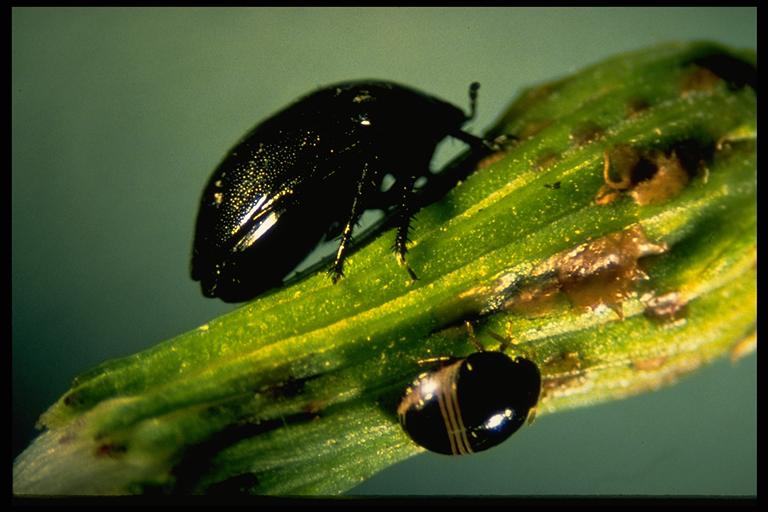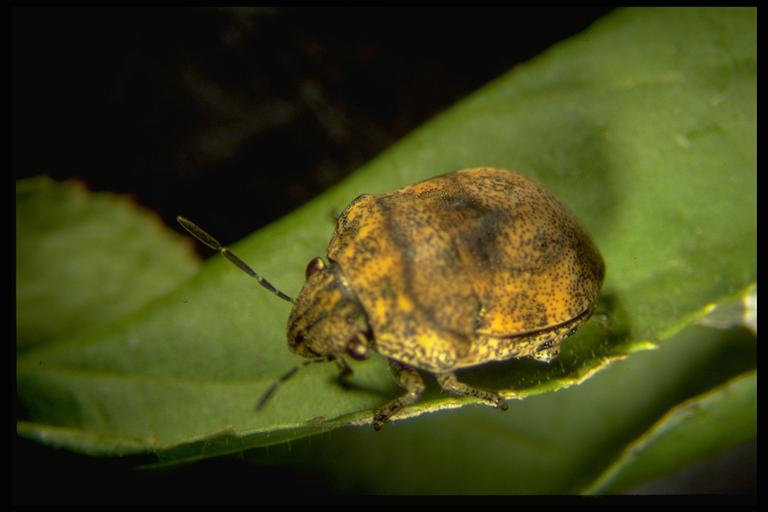
A burrowing bug, Pangaeus sp. (Hemiptera: Cydnidae). Photo by Drees.
Common Name: Burrowing bug
Scientific Name: Pangaeus sp.
Order: Hemiptera
Description: Adults are black, roughly 1/4 inch long, and superficially resemble small stink bugs. However, they are more oval and have spines on their leg segments (tibiae). The front wings are clear and membranous (hemelytron) at the tips beyond a black thickened basal part (corium and clavus), and can be seen at the rear end of the body when the wings are held at rest.
Members of the Thyreocoridae, e.g. Corimelaena pulicaria (Germar) (Hemiptera: Thyreocoridae), are similar to burrowing bugs. However, when at rest, adults lack clear membranous front wing tips because the wings are completely covered by an enlarged shell-like plate (the scutellum, which is normally a small triangular-shaped area between the basal part of the wings just behind the pronotum or shield located just behind the head). They are very beetle-like in appearance because the membranous wings are not

A corimelaenid bug, Corimelaena sp. (Hemiptera: Thyreocoridae). Photo by Drees.
easily visible. They are black or with a paler margin along the pronotum and scutellum. These bugs feed on grasses, weeds, berries and flowers. Scutellaridae have a similar shell-like plate on the back. They are generally brown to green and often enter homes in the fall.
Life Cycle: In Texas, burrowing bugs overwinter by burrowing into the soil at a depth of 6 to 8 inches below the surface until the first week of March, at which time they moved up to the surface.
Habitat, Food Source(s), Damage: Burrower bugs feed on parts of plants including pepper and spinach seedlings, vegetable crops, cotton and peanuts. Burrowing bugs occur in high numbers around lights at night during periods in the fall.
Pest Status: Can be a pest of crop production; large numbers of adults encountered around lights at night; found throughout Texas; medically harmless.

A shield bug, (Hemiptera: Scutellaridae). Photo by Drees.
For additional information, contact your local Texas A&M AgriLife Extension Service agent or search for other state Extension offices.
Literature: Borror et al. 1989; Cole 1988; Metcalf et al. 1962; Swann and Papp 1972.